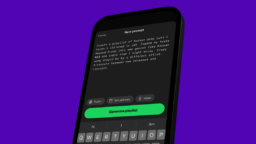In early June Spotify applied to the Federal Communications Commission for the use wireless networks approved by the United States government group. This adds to a rather long list of minor news stories that pointed to the Swedish company entering into the hardware market.
The reasoning that Spotify would like to create its own non-third party music streaming platform makes sense, but is it already too late for those plans to be fully realized?
Talk of Spotify hardware – be it a car device or a home smart speaker – is nothing new.
Before its April event to announce a redesign of its mobile app, the Verge reported on leaks that potentially showed a $12.99 or $14.99 per month plan, which included in-car streaming. While Variety back in April 2017 reported on the company showing a job listening called “Senior Product Manager – Hardware” that certainly implied physical device production. Still all of these breadcrumbs haven’t led to a single product in the hands of consumers.
While the speculation around Spotify’s move into the physical world continues to swirl, another company is surging forward in the music hardware space: Sonos. On August 1 the premium home speaker maker went public on the Nasdaq with less slightly fanfare than Spotify’s own public offering in April.
Part of the tepid response could be blamed on concerns over recent American tariffs, but the more existential conflict is because of Sonos working with music streaming companies that —unlike Spotify— are already making their own moves into hardware.
Sonos was fairly early to the market in connecting wireless speakers with a slew of new music streaming options (Spotify, Apple Music, Amazon Prime Music, etc). The partnership that made the most sense was with Spotify, because the company sought to place itself on all music playing devices. Sonos on the other hand wanted to stock homes with its various products and offer as little friction in compatibility between devices.
Both companies going public, at least on paper, showed how much strength there is right now in music focus products.
The issue facing both Spotify and Sonos going forward is that the other three major players in music streaming (Amazon, Apple, and Google) are also making inroads in the smart speaker market.
Amazon got a head start in late 2014 with its Alexa powered smart devices, which revealed a sizable audience for home smart speakers. One of the main selling points of Echo devices is its ability to play music and that is already seen in the now Warner Music Group owned Spinnin’ Record earlier this year making voice-branded playlists with titles like: Fit, Hundred, Pixel, and Brand New.
Not exactly the best terminology for a memorable playlist, but a signal that labels are ready to experiment in this new market.
According to analysts at Kantar Worldpanal a survey 15,000 people showed that in the United Kingdom Amazon Prime Music holds a 3.8% market penetration compared to 2.9% for Apple Music. Even though both numbers are up year-over-year—same with Spotify—the increased presence of Amazon Prime Music can be credit by its Echo devices along with and aggressive bundling of Amazon Prime services with additional entertainment options.
Last week Hits Daily Double also reported that the Amazon secured 9% of the overall streaming market as Apple Music and Spotify saw both companies’ overall combined market share drop from 90% to 75%.
Google, the company behind Google Play Music and the recently rebranded YouTube Music, are also making big steps into the streaming market. The research firm Canalys reported in Q1 that 3.2 million Google Home devices were shipped compared to 2.5 million Amazon Echos, which was the first time Google outpaced Amazon.
Not to be forgotten, Apple Music released its Homepod smart speaker earlier this year, but to a rather lukewarm critical and commercial reaction.
Spotify, who is still on the outside looking in of the smart speaker market, isn’t making up any of this ground.
Even though Spotify’s successfully marketed of artists and even moved its playlists into live concerts, the company hasn’t done anything to prove its brand holds enough cache to get people to buy a physical device.
The high-end speaker market is cornered by Sonos and the low end by Amazon, and of course both of them already play Spotify. The company’s goal is ubiquity across devices and setting up its own device in a way run against that idea.
Sonos is awkwardly placed in the same position. Going forward they’ll be facing competition from companies that make hardware, distribute music, and can integrate all of that into its broader ecosystem.
Apple is eyeing a shift towards a large entertainment bundle, Amazon’s Prime membership, and Google’s near dominance of search. Nick Millington in an interview with Engadget brushed off major concerns over Sonos products relying on Amazon Alexa a feature that Amazon could at any moment disconnect from its product.
Those kinds of concerns will only grow the more non-music tech companies invest into voice-based hardware. Perhaps a few years ago Sonos and Spotify could’ve built a closer connection to defend both companies’ place in the market.
Instead, both now public companies are keeping a close eye in how to fend off their mammoth competitors. Music Business Worldwide





